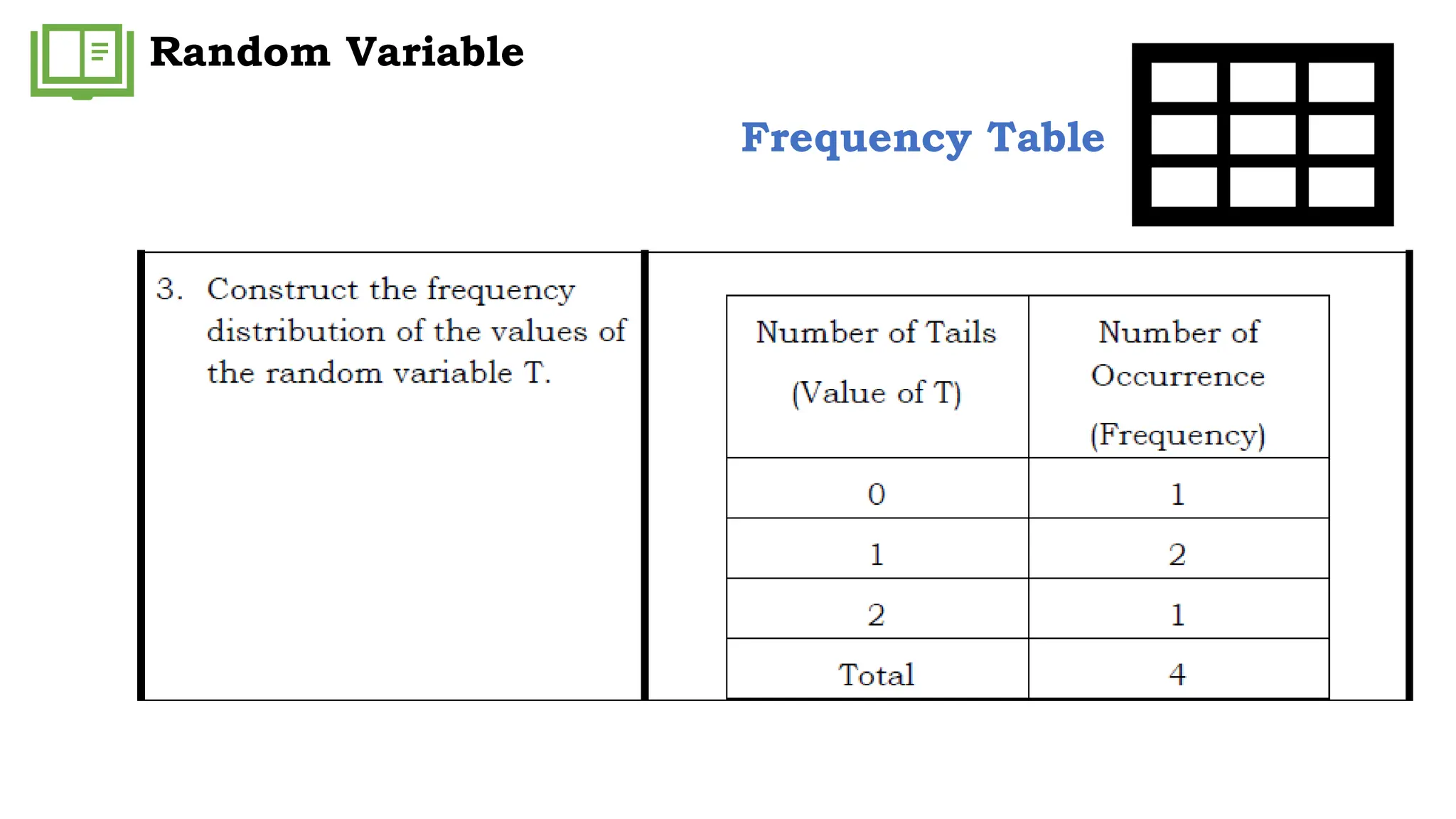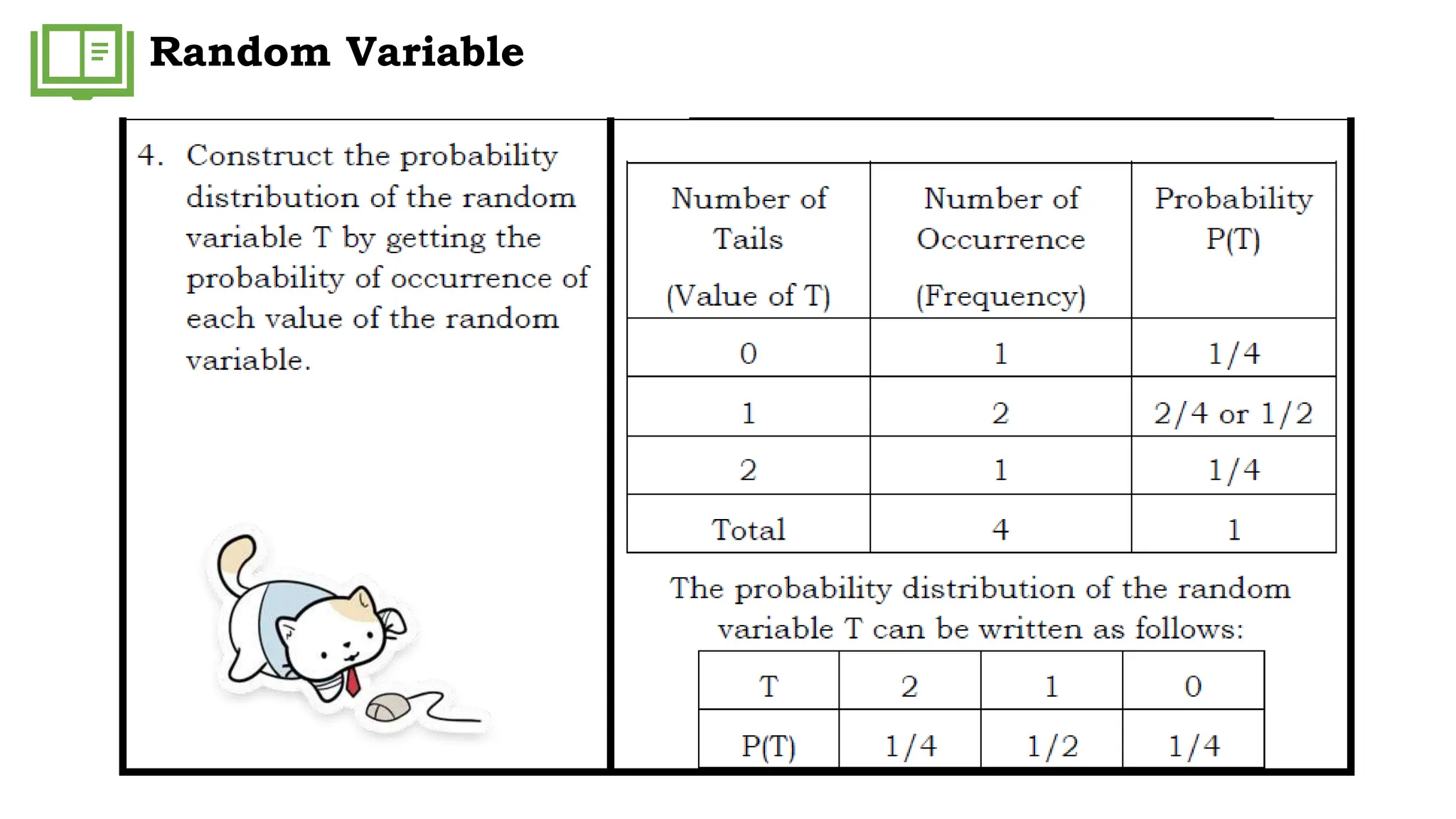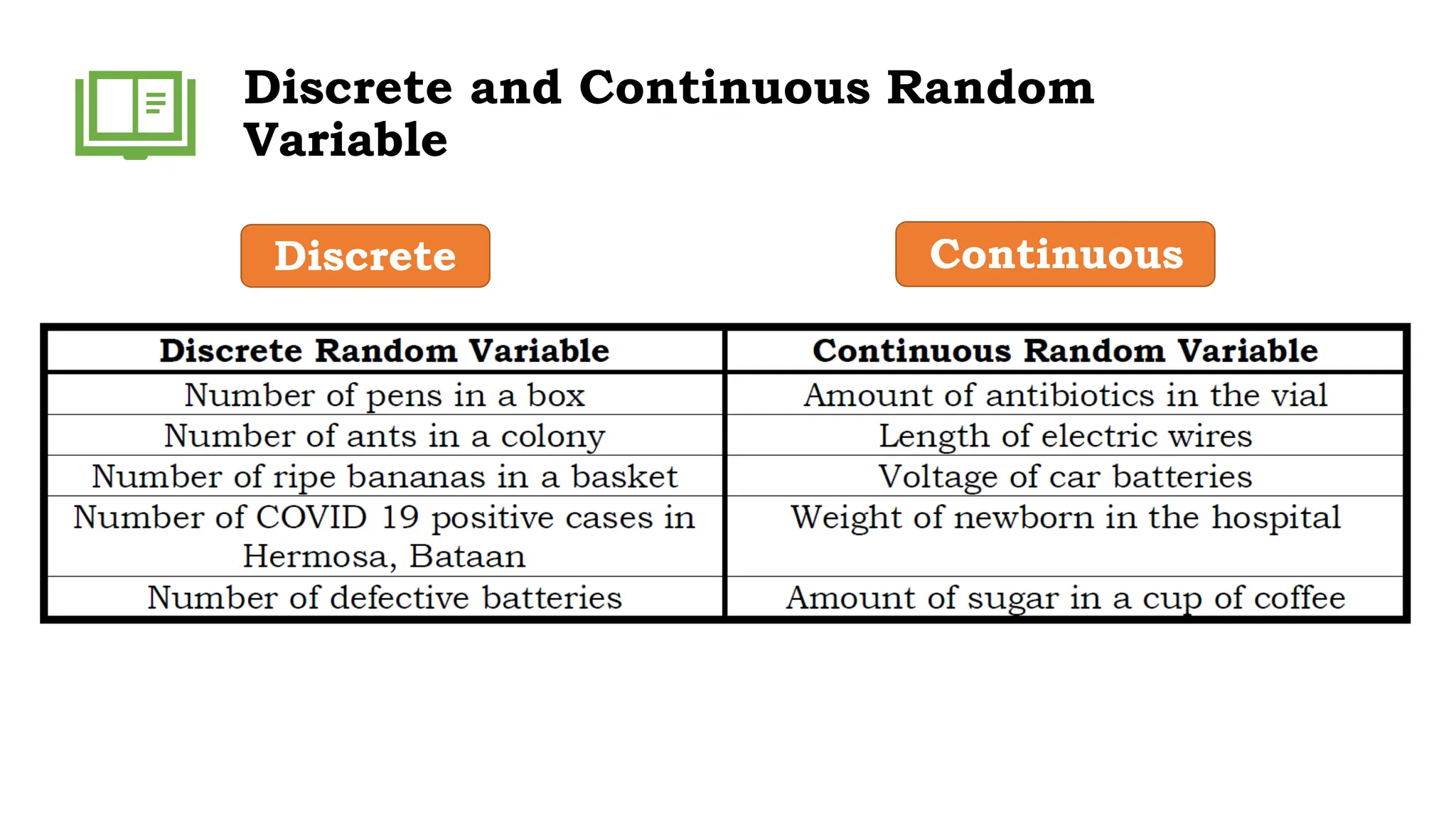The document provides an overview of statistics and probability, defining key concepts and objectives related to data collection and analysis. It covers definitions of random variables, various probability activities, and distinguishes between discrete and continuous random variables. Additionally, it includes exercises for finding probabilities and understanding the nature of randomness in mathematical contexts.
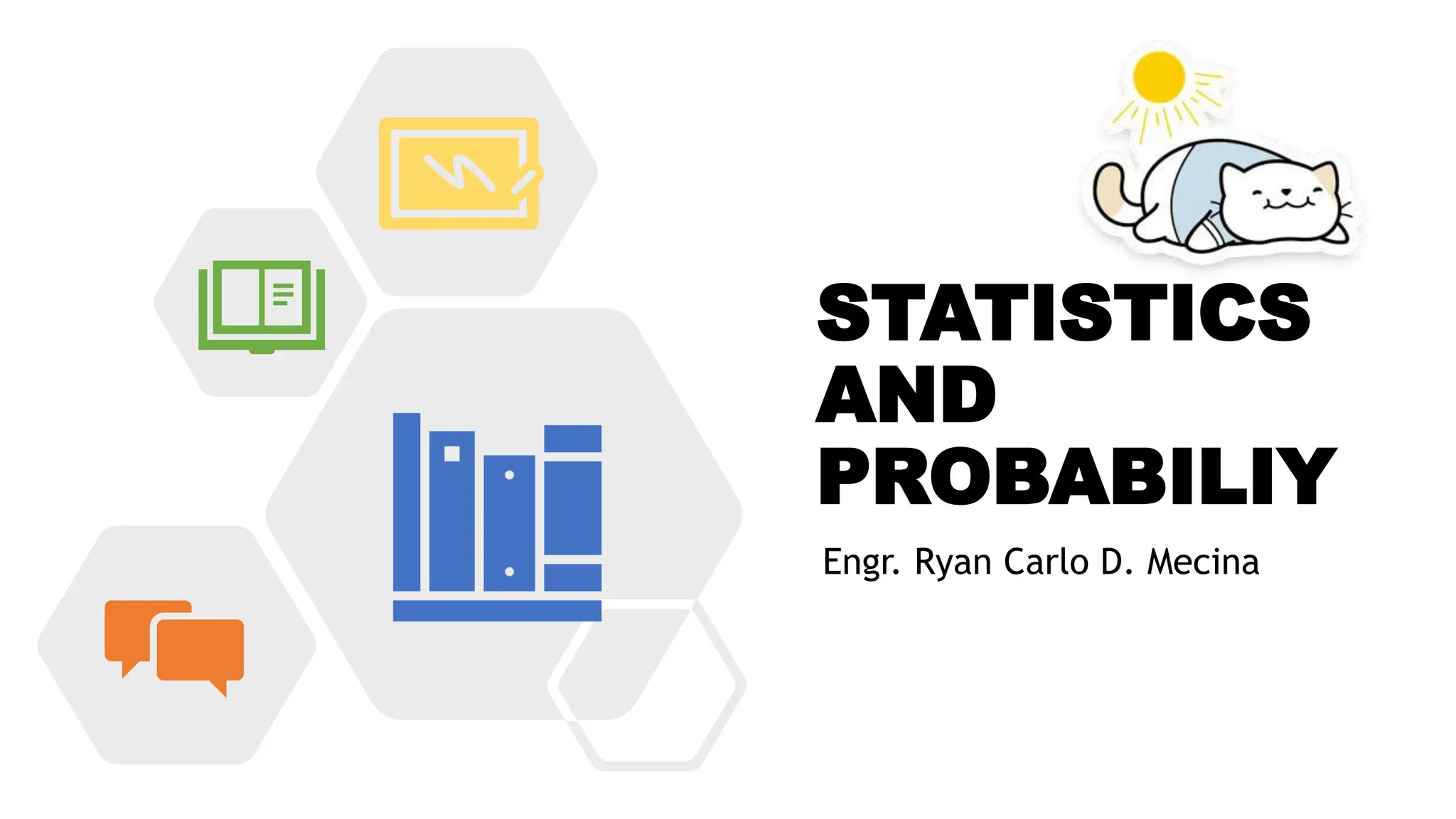
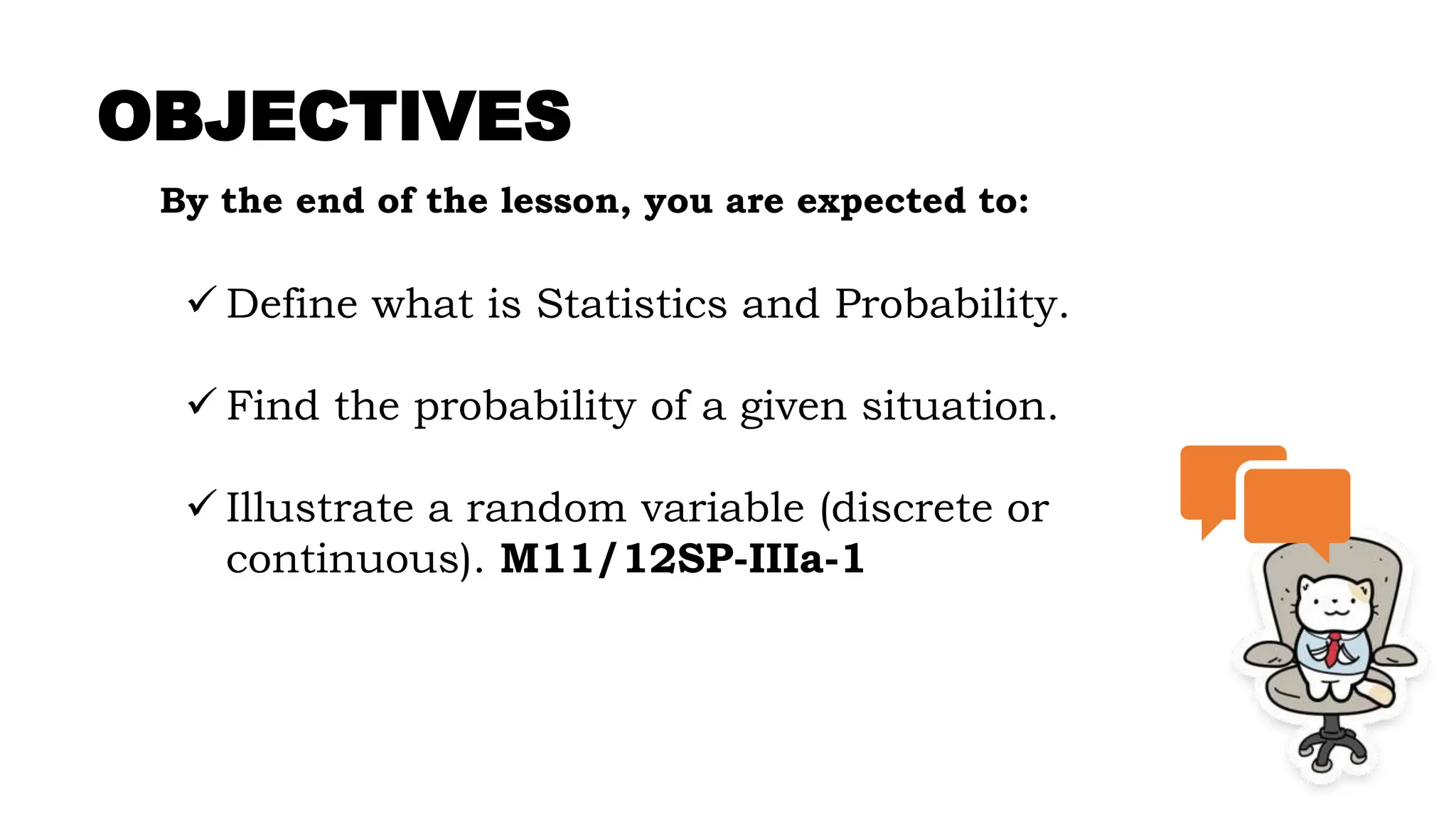
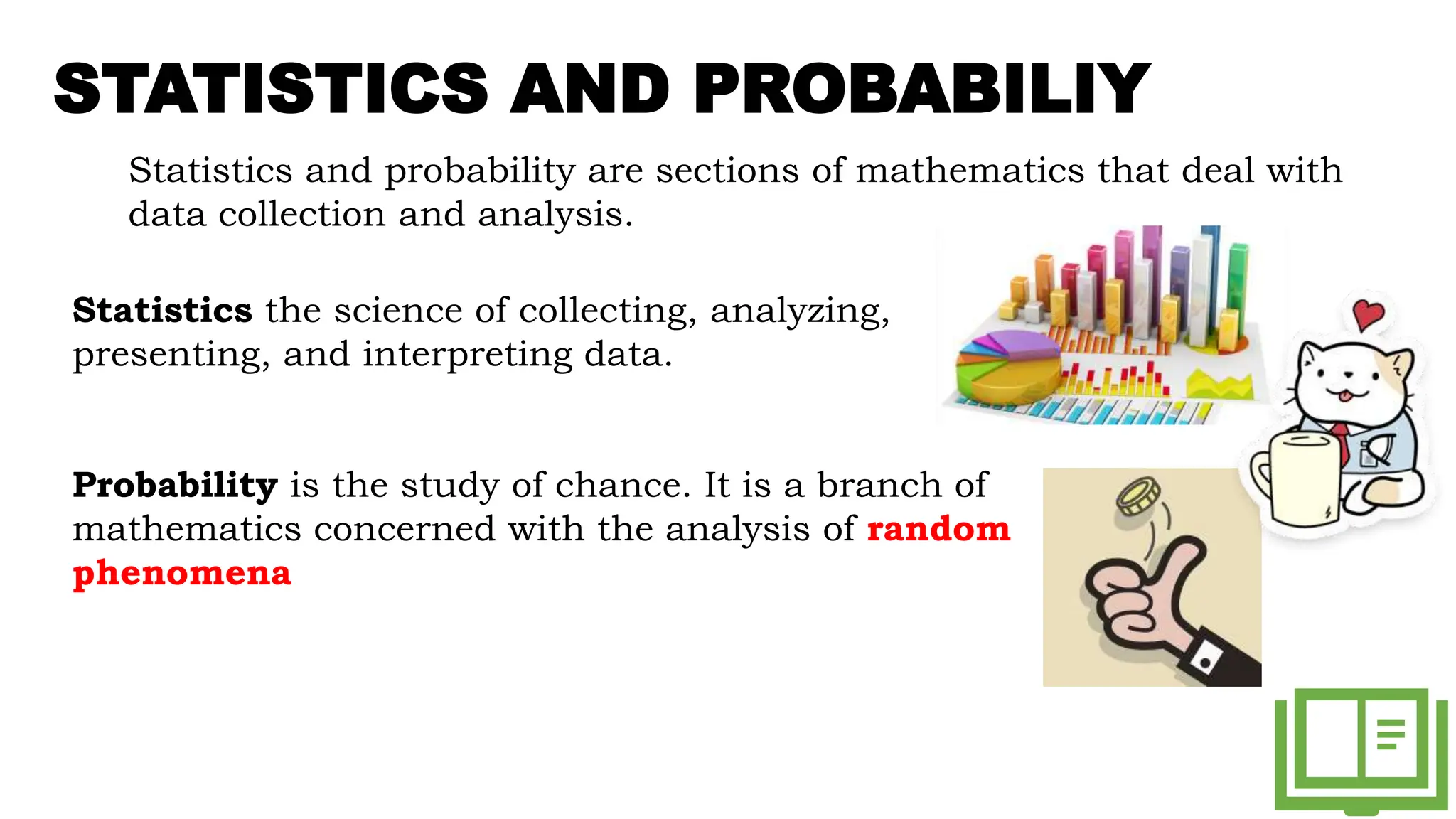


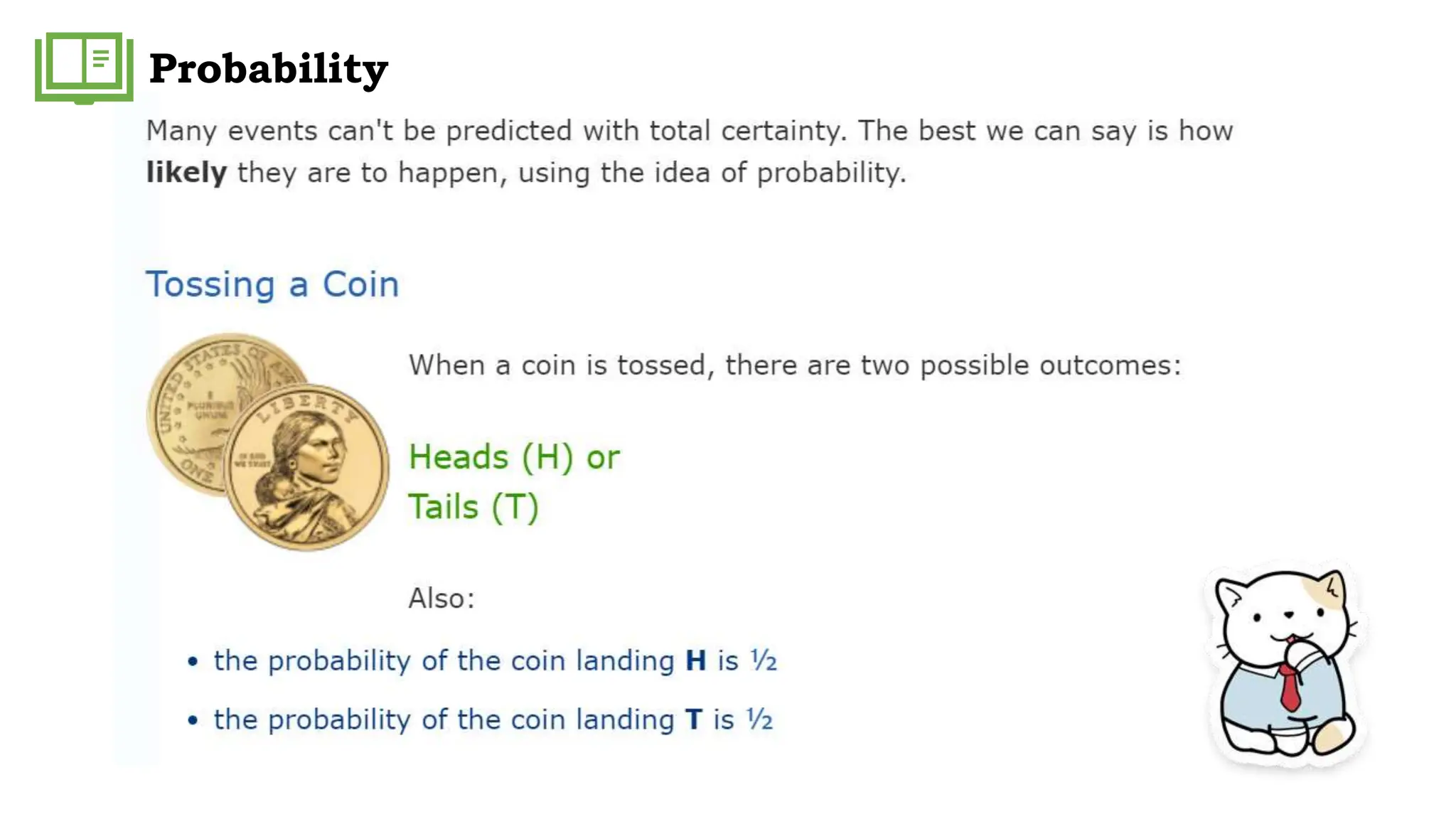

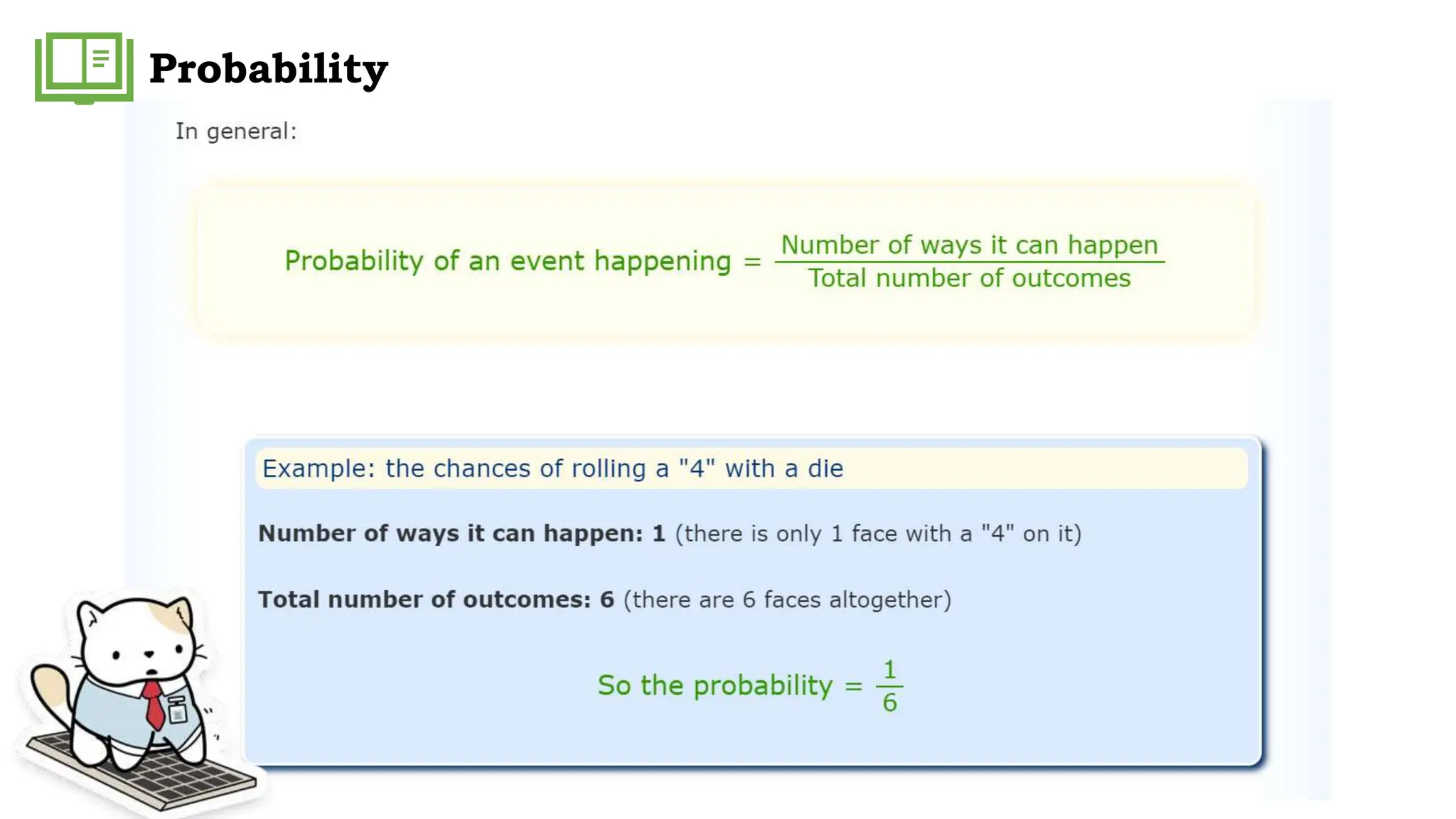
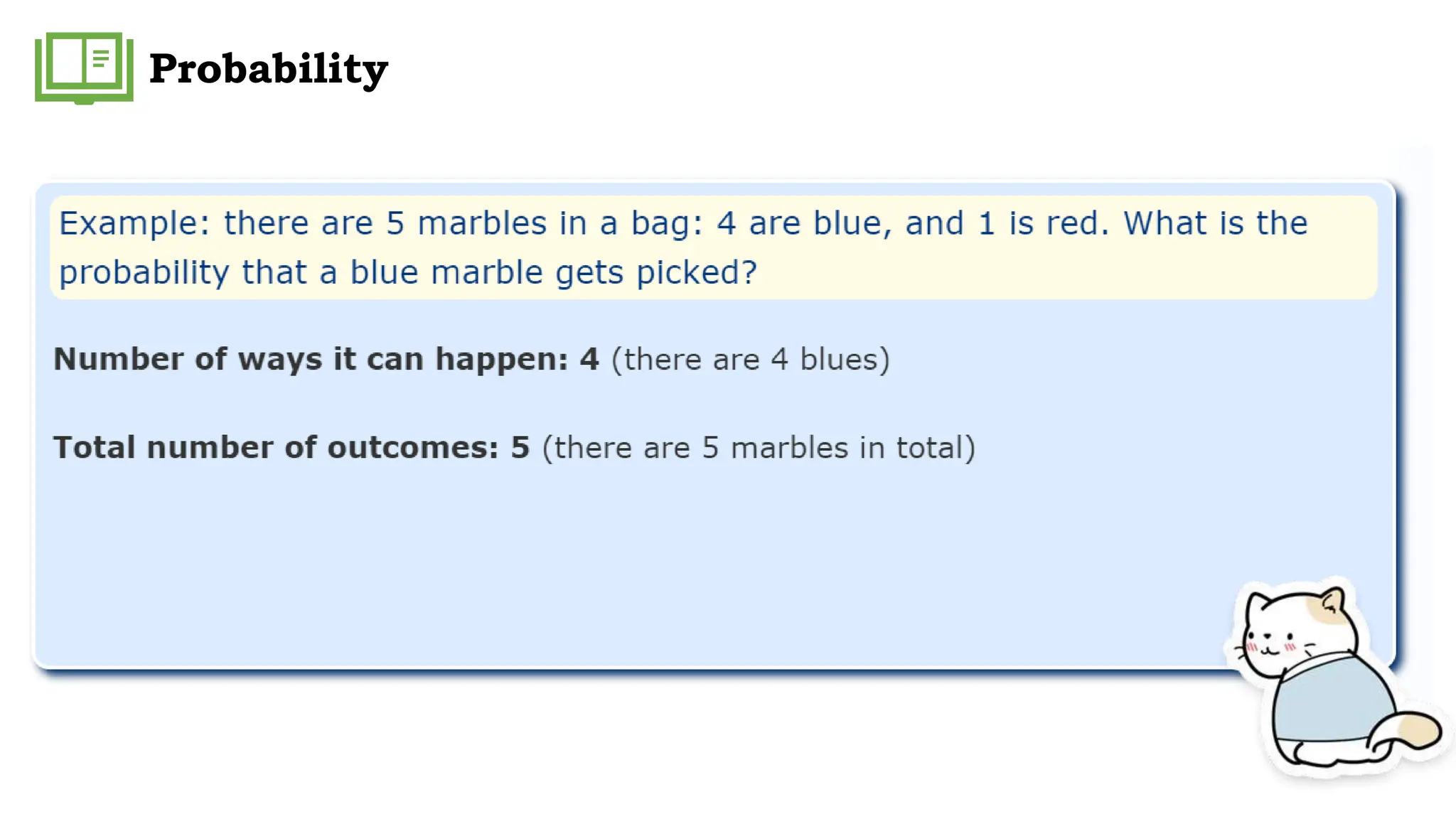
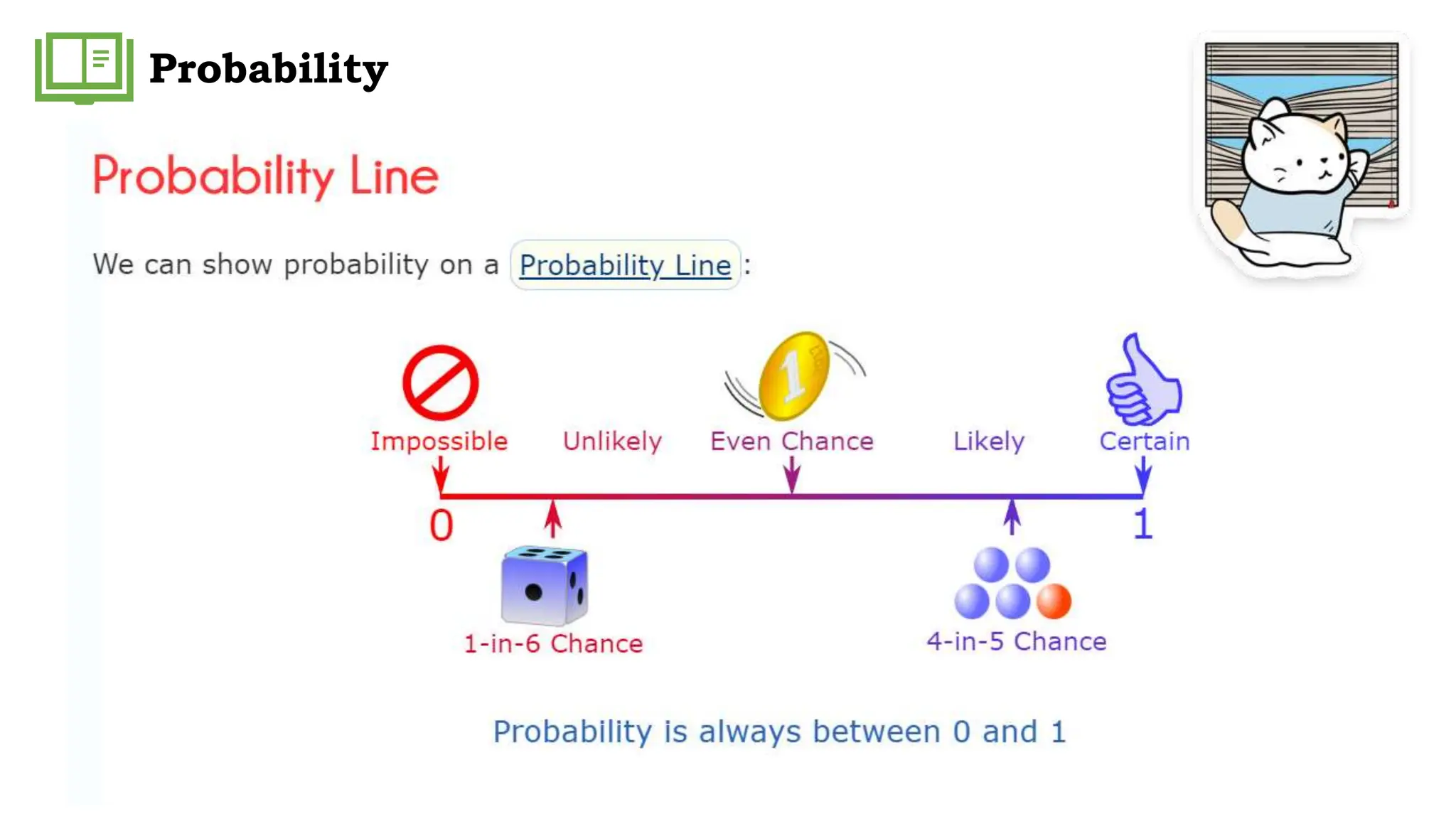


![Activity
Probability #3
If a number was randomly chosen from below, what is
the probability it will be an odd number?
[14, 5, 6, 13, 9 ]
Probability #4
A number is chosen at random from 1 – 50. Find the probability of
selecting numbers greater than 12.](https://image.slidesharecdn.com/lesson1statisticsandprobability-240228085030-ddb7ef6f/75/Lesson-1-Statistics-and-Probability-pptx-13-2048.jpg)











